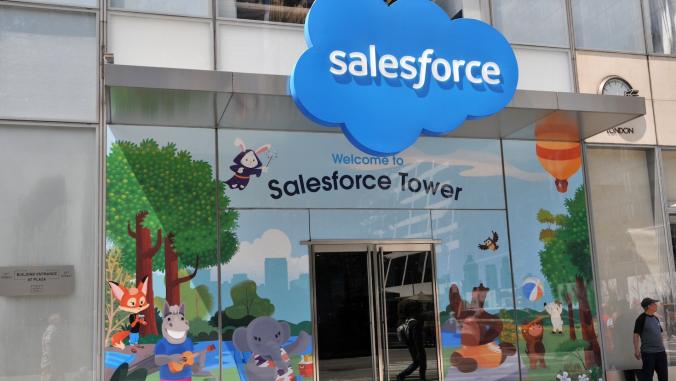Joseph Bradley, Cisco: Imagine your Internet of Everything
<p>This tech leader details how short-term wins are crucial for creating more than $4.6 trillion of long-term value for cities.</p>

Joseph Bradley, Cisco
Cisco estimates the value that the entire public sector could generate through the Internet of Everything (IoE) at more than $4.6 trillion. So how does your city or community grab a piece?
To gather more detail, I spoke with Joseph Bradley, managing director for the IoE practice, in charge of the Cisco consulting engagements team that has designed and deployed smart city solutions in places such as Nice, France, and Barcelona, Spain. First order of business for Bradley: make sure that the department bearing the cost can quantify the payoff, which often will be spread out among several agencies and might be hard to calculate. Following is an excerpted transcript of the conversation, edited for clarity and length.
Heather Clancy: Level set for us: What specific applications do Cisco's professional services team envision for cities?
Joseph Bradley: One of the core things that a city will ask us that we have to answer for them is, "How do I align cost with benefits?" Meaning that in a public sector environment, at the highest level, this case may make sense, but costs are concentrated, meaning they go to one particular player in the city, while benefits are diffused and go to many. So, the question becomes how do you get that actually initiated in a city, when the cost goes specifically to the city but the benefits go to retailers, citizens and other places.
So what we've done is to say, "When you think about that killer application or applications, you want to focus initially on those applications that actually align costs with benefits. And once you find an application that aligns cost with benefits, then you want to make sure that's tied to a key city imperative."
Clancy: So, where are good places to focus?
Bradley: When you look at the items [that create] new revenue in a city, besides taxation, the second or third item that's typically on there is parking. Parking is a great application area to focus on initially. That's one area that we are heavily focusing on and investing in, and that is because it aligns cost with benefits. When you deploy a connected parking solution, you're connecting a smart meter. That smart meter tells me space availability. If I apply analytics to that data, I can impact process, I can drive dynamic pricing. So, I know if there's a San Francisco 49er game taking place, the meter is worth a heck of a lot more than 25 cents every 30 minutes. I can raise the price of that meter based on demand for that meter. ...
Smart lighting is another area of focus for us for the same reason: It aligns costs with benefits. When you deploy a smart lighting solution, the dark asset obviously is the light pole. The data that's generated, it allows you to control when a particular light is working, the wattage being used, etc. You can correlate that to what's going on. If traffic is low, you can reduce the light or turn it off completely, which allows [the city] to save costs. It also allows you to offer free Wi-Fi, basically, because once you pay for the lighting solution, the light is already connected and now that [asset] can offer free Wi-Fi. Then, you find that when there's smart lighting, crime rates go down. When crime rates go down, property values go up. When property values go up, property taxes go up for a city as an example.
Then you get into waste management. If I connect that trash bin, it lets me know if it's full or partially full. So that means if I'm one of those huge garbage power trucks going down the road that globally burn up a billion gallons of fuel a year associated with managing those garbage trucks, I can change the route I take based on if I need to pick up that trash or not. Just by connecting that trash bin and looking at changing routes, I can reduce 30 percent of the cost associated with waste management.
Clancy: To what extent do municipalities need to think about that smart parking solution, for example, as a standalone application and something they should just get in place and get working versus a solution that can be used to scale and support other things? Is it OK to focus on one thing or should you think about those future applications?
Bradley: You need to take a platform approach. If you take a siloed approach to things, you will find that you will have a very slow implementation, because many of the solutions can ride on the shared common infrastructure and investment that you put in place. What we are able to do through the primary research that we've done in public sector is sit down with any city or municipality or state or federal government around the world in any location, any geography, and say, "Based on the makeup of your city, based upon your demographics, your economic profile, your citizens, this is the optimum roadmap of solutions that should be deployed to drive the greatest financial benefit and to have the greatest citizen experience."
We strongly feel that a city should take a holistic approach and say, "When I look at all these 40 solutions, I'm going to deploy a smart parking solution first because it's going to allow me the immediate financial savings inside of 12 months to then be able to leverage that Wi-Fi infrastructure to now connect to smart lighting, which then allows me to leverage that same infrastructure to now offer waste management, which then allows me to now also offer particulate monitoring."
And it goes on and on and on.
True innovation happens when the increase in the number of connections results in data that you can access. Meaning that the power of the network and the value of the IoE is increased exponentially when my smart parking system that I connected is also connected to now my smart lighting system. What happens is the citizens get more value. Now, all of a sudden, because my crime system is also tied into my smart lighting system and smart parking system, it knows if [someone] is parking a particular car in this area that [the system] needs to leave these lights on longer in this area to reduce the citizen crime experience. ...
The last thing I will say about why you need to think about this as a solution, not so much as a one-off deployment, is that it will affect privacy concerns. Privacy is very difficult to mandate. There are a lot of people talking about we've got to mandate the privacy issues and regulate. The reason this is very difficult is because privacy is contextual. … It is to a city's benefit to have a full roadmap of solutions that tie together so that the citizen's benefits are maximized. Therefore, the privacy concerns need to minimized [vis a vis] that value to allow [the city] to continue to implement [those services]. It's really, really, really important that a citizen be shown the complete and maximum value they can get for a solution so that they can make that tradeoff.
Clancy: Are there process changes or backend systems that need to be addressed before all this happens?
Bradley: Yeah, absolutely. The biggest advice I can give is that while technology is the shiny object, the value is in the people and process. The reason we say people, process, data and things — and put them in that order — is because that is the order upon which value is created. So the people and process component comprises in most cases 60 percent of the value that you'll extract from an IoE-enabled solution.
Make sure that you have thought out the impact to the workflow process from a city perspective, the citizen experience from a citizen perspective, and make sure that one of the core components that come out of your research is that you have a city culture or an employee culture that is truly inclusive. When we looked at organizations that were successful in achieving value from IoE-enabled solutions, 93 percent of inclusive organizations exceeded their return on investment expectations as opposed to only 28 percent who were non-inclusive.
When you think about inclusion in the lens of IoE, it means three things: Do you draw full participation in your organization? Do you foster and have next-generation collaboration skills? And thirdly, do you have a strategy for truly extraction of maximum value for big data and analytics? Big data — in essence, a solution that throws out a lot of information — is worth nothing, absolutely zero without big judgment.
Clancy: With that in mind, can you give me an example of a solution other municipal governments should study or emulate?
Bradley: Barcelona, I think, is a great example. Think about the state of financial crisis and the fiscal status of European cities, and here is Barcelona with a surplus. They have really embraced IoE-enabled solutions. Smart parking clearly is a big one within Barcelona that definitely should be looked at, and there's a lot of people and process [lessons] as well.
[In Barcelona], we were talking about cost being concentrated and benefits being diffused, and they said, "Wow, we need to consolidate these various departmental budgets that are isolated in little islands because of the fact that these solutions will cut across many of the departmental budgets. We need to consolidate these in order for everyone to see and benefit from the potential of these solutions." Another example is the Nice [Connected Boulevard project]: this is a great example, I think, of how to shape the citizen experience in terms of interacting with city services and retailers and the like.
Main image by Lightspring via Shutterstock.





